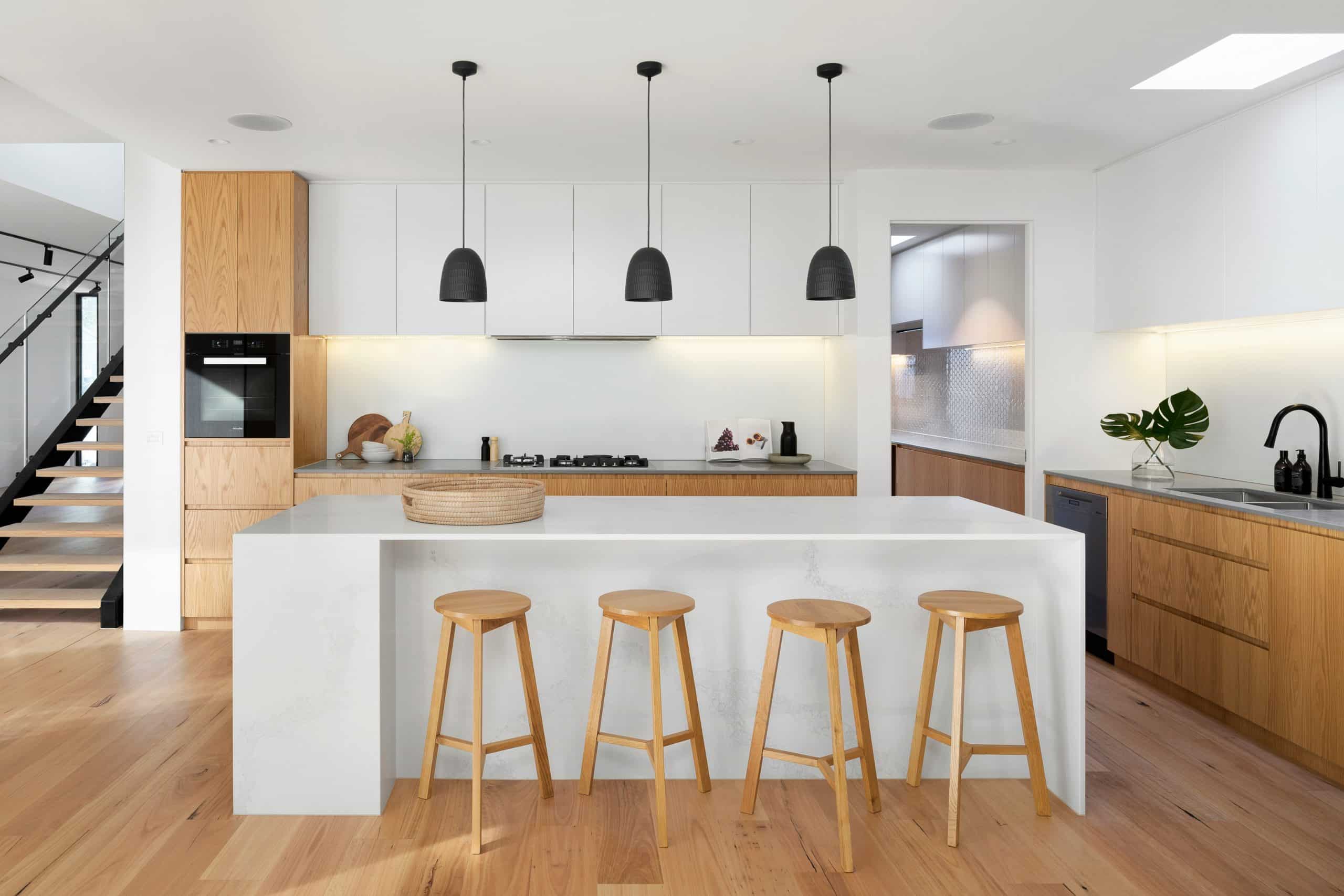What’s the Best Approach for a Kitchen Island that Serves as a Cooking, Dining, and Socializing Hub?

In this era of open-plan living, kitchen islands have moved away from being purely functional units to becoming the heart of a home. They have transformed into multi-purpose hubs where families cook and eat, entertain friends, and even work or study. Today, we will look at ways to design a kitchen island that offers functionality, storage, and a welcoming dining space. We’ll also share some layout and design ideas that can help you create a kitchen island that is both beautiful and practical.
Choosing the Right Shape and Layout
The first step towards creating a versatile kitchen island is choosing an appropriate shape and layout. This decision should be guided by factors like the size of your kitchen, the amount of storage you require, and the functionalities you want to incorporate into your island.
Cela peut vous intéresser : How to Integrate a Loft Bed in a Small Bedroom to Maximize Space and Functionality?
A rectangular or square island might be a traditional choice, but don’t shy away from considering other shapes. An L-shaped or T-shaped island could offer more workspace and seating area. If your kitchen is smaller, a circular or oval island might be your best bet. Besides saving space, it also enhances the flow and interaction possibilities around it.
For the layout, consider the classic kitchen triangle – the sink, stove, and refrigerator. Your island should complement this layout, allowing you to move freely and efficiently between these three areas. The island can house any one of these elements, or act as a bridge between them, depending on your cooking habits and preferences.
A lire en complément : How to Create a Customized Home Office with Ergonomic Furniture for Freelancers?
Incorporating Functionality and Storage
A kitchen island isn’t just about aesthetics; it should also add to the functionality of your kitchen. Be practical about what your island needs to include to make your life easier. It might be a second sink for prep work, a built-in microwave, or a dishwasher.
Consider also the amount of storage you need. If you’re short on cupboard space, incorporate cabinets or shelves into your island design. Open shelves can be a great way to display beautiful dishware and cookbooks, while drawers or cabinets can hide away less attractive kitchen items.
Also, consider the height of your island. If it’s too high or too low, it can make cooking or dining uncomfortable. A multi-level island, with one side at a lower height for seating and the other side at a higher height for cooking, can be a smart solution.
Designing for Dining and Socializing
The kitchen island can also serve as a dining and socializing hub. To achieve this, you need to consider seating. Bar stools are a popular choice for their casual vibe, but if you prefer something more formal, a built-in bench or upholstered chairs might be more to your liking.
Consider, too, the type and quality of the countertop. It will need to withstand hot pots, spills, and the occasional elbow or two. Granite and quartz are durable options, while wood offers a warm and rustic feel.
Also, think about how you can make your kitchen island a inviting place for family and friends to gather. For instance, you could incorporate a wine fridge, a rack for hanging glasses, or a bookshelf for cookbooks.
Adding a Personal Touch with Design Ideas
Finally, remember that your kitchen island should reflect your personal style. Add a pop of color with a painted base or colorful stools. Alternatively, opt for a sleek, minimalist design with a glossy white finish and stainless steel appliances.
Consider using contrasting textures too. Pair a smooth granite countertop with a rough, wooden base, or a shiny stainless steel sink with a matte black faucet.
Lighting can also make a significant difference. Pendant lights over the island can provide task lighting for cooking and add a decorative element. For a softer look, consider under-cabinet lighting.
Remember, the kitchen island is a focal point in your open-plan living area. So, make sure it’s a piece that you love and one that complements the overall design of your space.
So there you have it, folks. Designing a kitchen island that serves as a cooking, dining, and socializing hub can seem daunting. But with the right considerations in terms of shape, layout, functionality, storage, dining, and design, you can create a truly versatile and stylish space. As you embark on this exciting project, just remember that your kitchen island should primarily cater to your lifestyle and needs. After all, it’s all about creating a space that you and your family will love and enjoy for years to come.
The Role of Kitchen Island Seating Options and Counter Height
Kitchen island seating is an essential part of the design, serving as the centerpiece of your kitchen’s socializing hub. The seating options you choose can greatly impact the comfort and ambiance of your kitchen. Whether you choose bar stools for a casual setting, built-in benches for a more homely vibe, or upholstered chairs for a more luxurious touch, it’s crucial to find seating that complements your kitchen design and meets your lifestyle needs.
The counter height is equally important in determining the comfort and functionality of your kitchen island. The standard counter height for kitchens is about 36 inches, but it can vary based on personal preferences and needs. If you have children or family members with special needs, you may opt for a lower counter height. Alternatively, a higher counter may be more appropriate if you frequently entertain guests or use your island for serving food.
Also, consider a multi-level kitchen island, where one side serves as a lower seating area and the other as a higher workspace. This type of island layout allows for great flexibility, catering to both your cooking and socializing needs.
Tips for Maximizing Island Kitchen Storage
Ample kitchen storage is vital for maintaining an organized and clutter-free kitchen. The island kitchen provides an excellent opportunity to add extra storage space to your kitchen, keeping your utensils, appliances, and other kitchen essentials within easy reach.
For instance, you can incorporate cabinets and drawers into your island design for hidden storage. This will help you stow away bulky appliances and less attractive kitchen items. If you prefer showing off your dishware or cookbook collection, open shelving can be a fantastic option.
For small kitchens, consider a storage-efficient island that houses your appliances like a dishwasher, oven, or microwave. This way, you can free up more countertop space on your main kitchen counter, making your kitchen look more spacious and clean.
Conclusion
Designing a kitchen island that serves as a cooking, dining, and socializing hub may seem like an enormous task, but with thoughtful planning and careful consideration of your needs and preferences, it can be an enjoyable project that adds immense value to your home.
The layout, shape, and functionality of your kitchen island should be tailored to your cooking habits and lifestyle. Your island’s seating options, counter height, and storage ideas should ensure that it’s not just a beautiful focal point in your modern kitchen, but also a practical and comfortable space for you and your family.
In essence, your kitchen island should be more than just a place to cook and eat—it should be a place where memories are made, stories are shared, and everyday life is celebrated. So go ahead, design your dream kitchen island that brings delight, warmth, and conviviality into your home.
